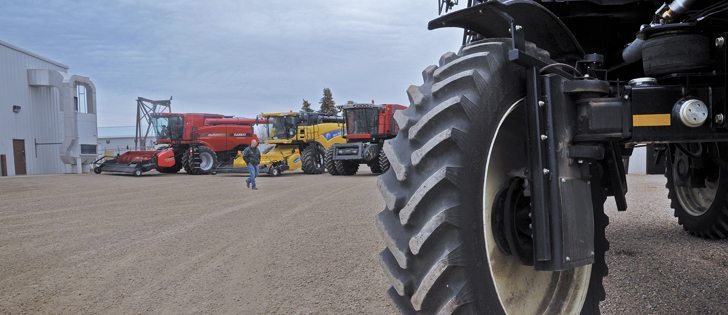Small machinery makers have the ability to develop products more quickly but they must be hassle-free for dealers
WINNIPEG — Short-line machinery makers need to focus on keeping their dealers happy by satisfying farmers early and often, says the former head of New Holland.
Al Ryder said equipment companies need to invest well and wisely in product development if they are going to remain profitable for the long term.
He said machinery companies should invest two to five percent of their sales in developing new products.
“Success these days is built on listening to farmers about their needs and including those growers in your product development,” he told the Agricultural Manufacturers of Canada’s annual meeting in Winnipeg last week.
Read Also

Final crop reports show strong yields, quality
Crops yielded above average across the Prairies this year, and quality is generally average to above-average.
David Gullacher, who runs the Prairie Agricultural Machinery Institute and its affiliate machinery testing operation, Westest, said it used to take seven years and $15 million to develop a $250,000 piece of farm equipment.
“That cycle has been getting shorter, but still has significant costs,” he said.
“Over 15 years of selling the product, you might gross $790 million and have another $5 million of sustaining engineering (costs) in its life cycle.”
There was a time when manufacturers could spend years in the prototype phase creating a new piece of farm equipment. Seeding gear might go to the field each spring for several years to be proven and then be released to the marketplace with a view to later improvements after producers had worked with the technology.
Ryder said machinery makers don’t do this anymore.
“You don’t want to be learning about how to improve your products through warrantee claims,” he said.
Gullacher said today’s distributors are aware of the competition for dealers’ shop and salespeople time. As a result, they might not want to carry a product if it costs them time or credibility.
“Dealers don’t want any more work, especially from a short liner. Reliability: it has to go from (your plant) to their lot and off to the farmer without any fuss,” he said.
“Right now, farmers will switch from red to green and back again on a dime to get what they want when it comes to technology that can make them more efficient or profitable.… And everybody knows it.”
Ryder said the ability to quickly respond to farmers’ needs is creating market opportunities that historically were harder to meet.
Gullacher said machinery builders can dramatically reduce their development and testing time by taking advantage of PAMI’s Westest program, which provides access to professional engineering and durability testing.
Westest was created through a partnership between AMC’s predecessor, the Prairie Implement Manufacturers’ Association and Manitoba Hydro, Saskatchewan Mining Association, CNH Global and John Deere.
He said the program helps short-line companies take advantage of their ability to nimbly respond to farmers’ needs and still have world class engineering and physical testing.
“And it’s yours. You have (the majority) of the board members (of Westest),” he said.
AMC president Leah Olson said members receive discounts in testing and development feeds at Westest.
“We have a formal arrangement, as of this week, that reduces costs for members of AMC when they use Westest’s services,” Olson said.
Westest has generated $6.6 million in sales since 1991 and has $700,000 in retained earnings and $250,000 available for new product development.
Gullacher said PAMI and Westest are able to share engineering that has been tested and refined by the organization.
“We learned a lot of skills in mechatronics working with (the national defense department) in Afghanistan’s 15 years of war,” he said.
PAMI does a lot testing for large companies such Deere and CNH, but it also works with Manitoba’s bus industry, where two major manufacturers are looking for fuel efficiency in their designs through weight loss strategies.
PAMI and Westest can use its large labs to do force and vibration simulation.
“We can give the bus industry 20 years of (wear and stress) data in 48 hours…. We have a 1,000 horsepower dynamometer and we can test to -60 C. Cold shock and vibration are just a few of the things,” he said.
“We can bring a lot things we have learned from DND, Deere and CNH, for instance, without sharing their proprietary technologies, to your designs.”
A trend in equipment testing is to not test whole implements or machines but instead to lab test individual components and design strategies.
“You all will be doing more lab testing in the future,” he said.
“It is more efficient and lets you explore options at reasonable expense.”
He said the other advantage is that nearly all of the work that Westest performs is eligible for the federal government’s scientific research and experimental development tax incentive program.
“You can quite confidently submit our invoices and they will be eligible,” he said.
Westest is a not-for-profit that contracts PAMI’s facilities and infrastructure.
For more information, email Gullacher at dgullacher@pami.ca or call 306-682-2442 ext. 244.















